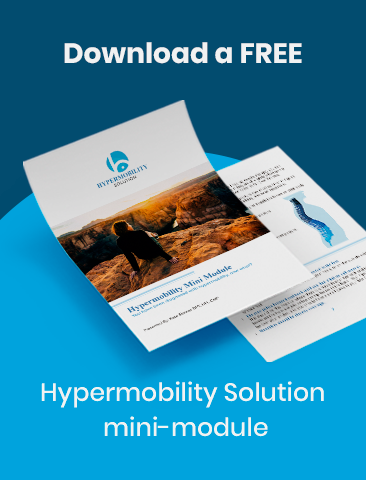Although it may seem as though diet and hypermobility might not relate to one another, you would be surprised to find that they do.
Here are a few tips and tricks to manage your diet and the symptoms caused by your diet.
Your Current Diet
When looking at symptoms, especially during a flare-up, the first thing you want to think about is, “what is my current diet?.” It’s essential to start with a good, basic diet, such as whole foods, vegetables, and protein-rich foods.
If your current diet is currently composed of many highly processed foods, such as Oreos, or Cheetos, you’re probably experiencing some diet-related flare-ups already. Somewhat akin to the car/gasoline analogy, what you put into your body, in turn, relates to your output.
If you’re not taking in good nutrients,you won’t be able to move, function, and perform to the extent that you want to.
So, first and foremost, it’s essential to set a healthy baseline for your diet before starting any other, such as an anti-inflammatory or elimination diet.

Anti-Inflammatory or Elimination Diet
Once you have ruled out any overly processed foods within your diet, the next cause of a hypermobility flare-up could be caused by foods that increase inflammation.
When starting an anti-inflammatory diet, you’ll want to eliminate sugars, alcohols, lactose, dairy, and gluten.
When practicing an anti-inflammatory or elimination diet, keep in mind that just because one of these aspects may cause inflammation, not all do.
Some people may need to eliminate all, and some people may just need to get rid of one.
These types of diets can be super beneficial for some or not at all for others. It solely depends upon the person, especially when hypermobility comes into the picture.
When secondary conditions are introduced, different diets will apply. Keep in mind that when starting an anti-inflammatory/elimination diet, the parameters of that diet will depend upon each individual.
An example of one of these types of diets is the Whole 30 Diet. If you’re not seeing results within six months, then you can eliminate your flare-ups being solely linked to aspects of a diet.
The Importance of Hydration
Along with elimination diets, another aspect of diet that people often tend to forget is hydration.
Hydration truly makes a massive impact upon those of us that struggle with hypermobility.
Hydration can help with electrolyte issues, blood pressure issues, and more. Thus, it’s crucial to make a point to consume six (at minimum) to eight glasses of water a day.
When the body is dehydrated, the connective tissues within the body feel stiffer and don’t work as well. By hydrating, you are “lubricating” those connective tissues and hopefully minimizing hypermobile flare-ups.

Digestion
Regular digestion is designed to work where our abdomen is a high-pressure cavity. What that means is our bodies need to generate quite a bit of pressure within our stomach to be able to move food through the colon.
If your body can’t generate good force, then there’s nowhere for that pressure to go. And when that happens, things tend to bog down, making digestion slower, more complicated, and painful.
Often, those struggling with hypermobility struggle with weakness in their core. This can occur due to abnormal muscle firing patterns (which is hugely common).
When these are present, people try to use their diaphragm or their rectus abdominis as their core, instead of their transverse abdominal muscles. This ends up forming compression and causing discomfort, and even a flare-up.
Getting those specific muscles to work correctly and work aligned to hold you together is hugely vital for digestion. But don’t worry, these abnormal firing patterns are super common with hypermobility,
Abnormal firing patterns come with coordination of the body’s firing patterns and pelvic floor control. Although this part of digestion may be somewhat unknown to us, it is important to have all aspects of digestion working together.

Secondary Conditions You Need to Pay Attention To
If you have dysfunction in that category, it’s common to end up with secondary conditions, such as Vertical Bowel Syndrome or diverticulitis issues. This is where a specific diet can be helpful.
These issues are often when digestion within our bodies slows down or doesn’t work how it’s supposed to, which then creates abnormal bacteria levels within the gut.
Although you do need bacteria within your gut, you need the right bacteria in the right amount, which helps break down food.
If you get the wrong bacteria in the wrong section of your gut, you can end up with secondary conditions like SIBO.
In this situation, a FODMAP diet, which eliminates those carbohydrates and sugars that are causing issues, can be extremely helpful.
If you’ve struggled with diverticulitis pockets, and now your bowel has stretched, that calls for a different type of diet. With diverticulitis, your diet will include more of an incorporation of fibers to make digestion easier and smoother for the body.
The Root Issue
We often forget where issues stemmed from. For instance, a past gallbladder surgery could be the root cause of the scar tissue that’s keeping your abdominal muscles from getting their strength back. Unfortunately, those are the types of issues that recur.
It’s important to incorporate a diet to help minimize these symptoms and keep them from exacerbating the issue.
The Role of The Nervous System
Hypermobile people who have mast cell issues can start to be sensitive to foods that they weren’t nsensitive to before, which can be incredibly frustrating.
When this happens, it’s important to ensure that you are taking good care of your immune system. Engaging in stress management techniques, and working closely with your physician to hopefully minimize food sensitivities as much as possible.
Paying Attention to Your Diet
Keeping a strict diet can be incredibly difficult. If you find that you’re dealing with more flare-ups than usual, you may want to check your diet patterns.
Do you want to live a hypermobility pain-free life? I’m launching a new Facebook Group, where we’ll be sharing tips on managing chronic pain and hypermobility-related complex conditions.
We’ve helped hundreds of clients with their hypermobility issues and hope that we can help you, too!

About Kate

Kate Skinner is a Doctor in Physical Therapy, co-founder of Great Divide Physical Therapy, and creator of Hypermobility Solution.
Recent Posts



